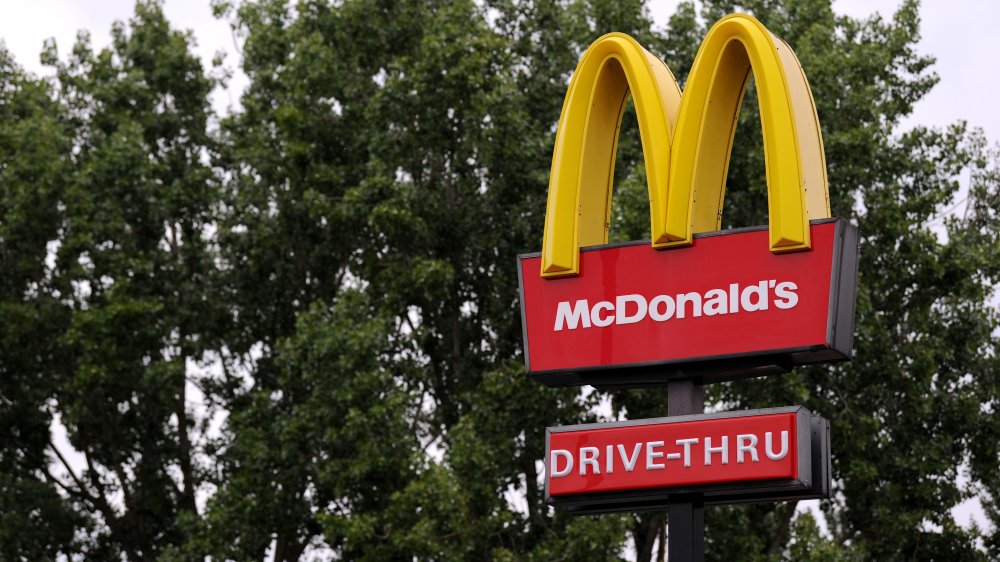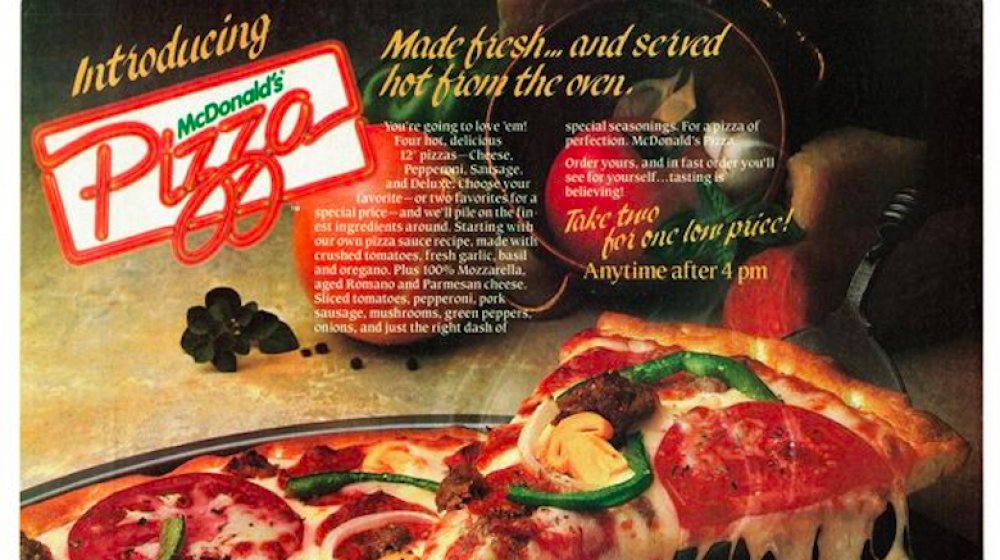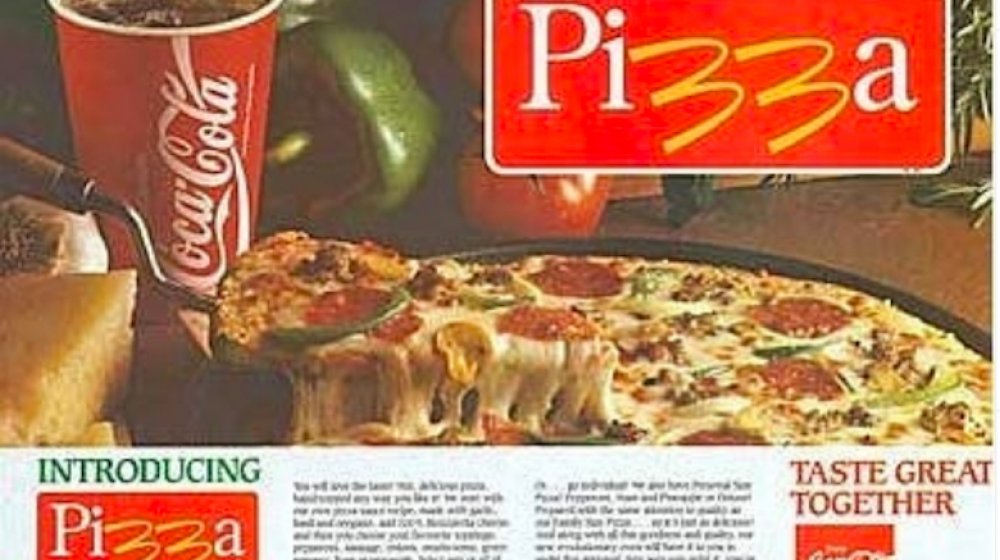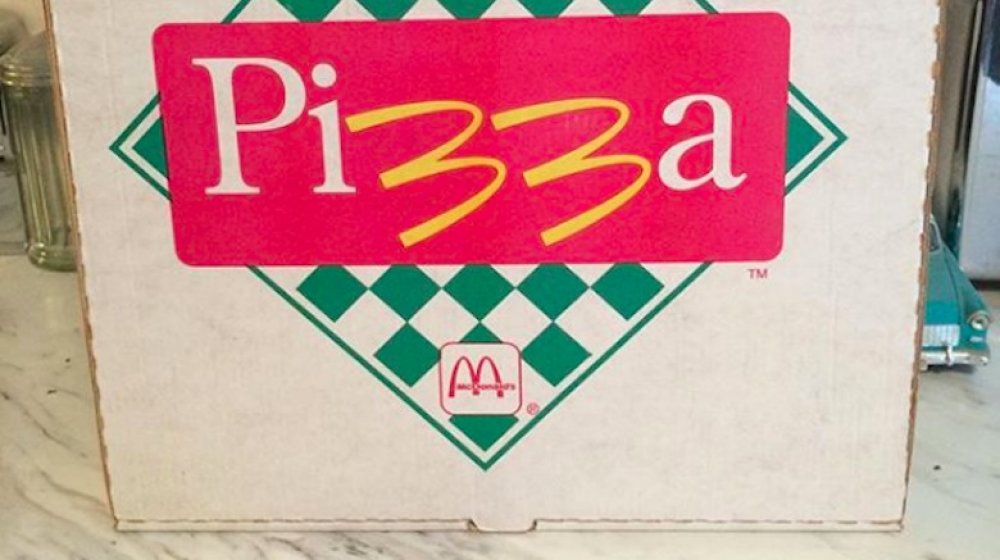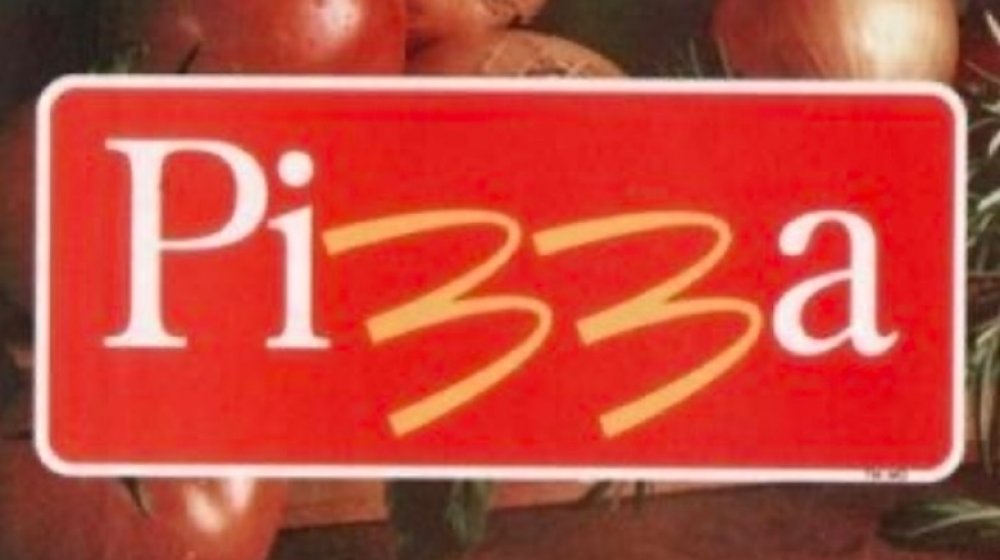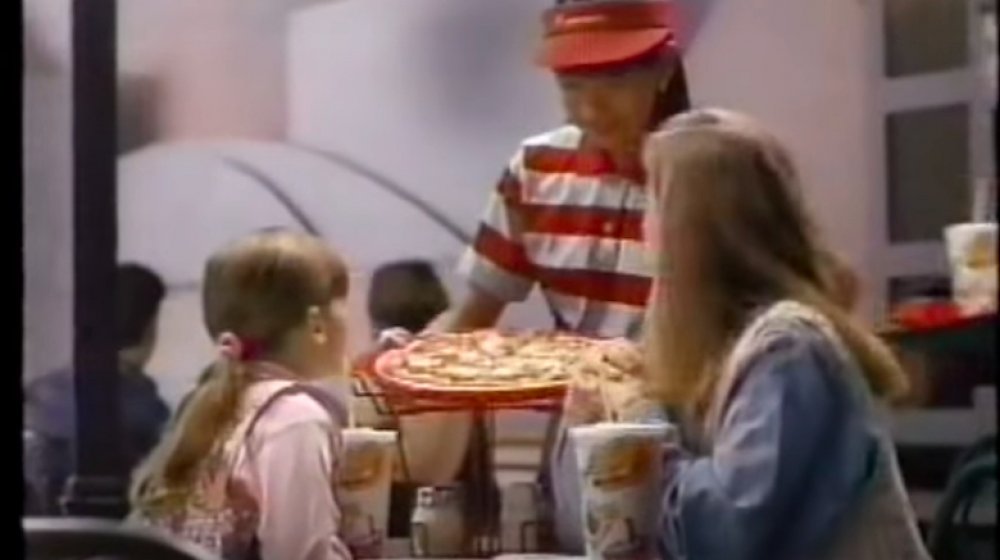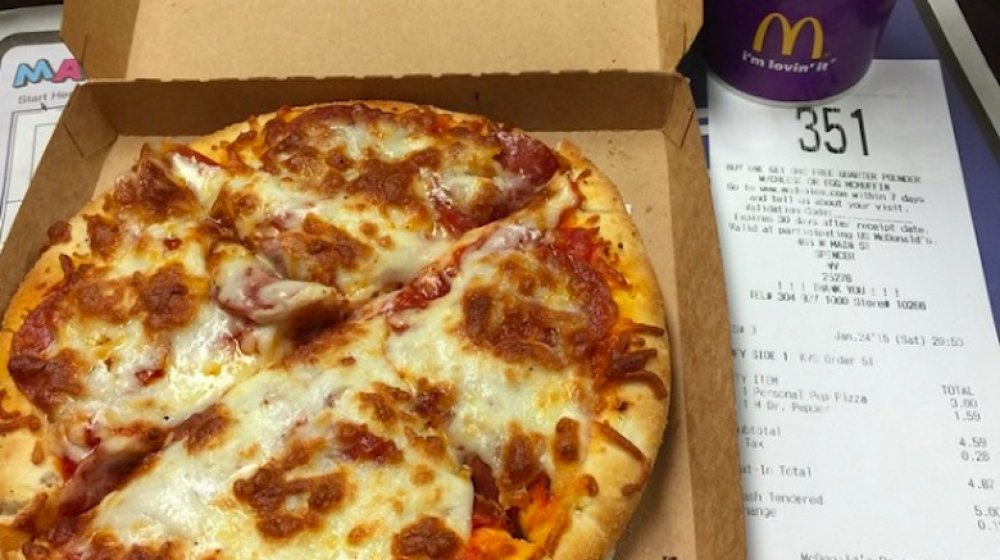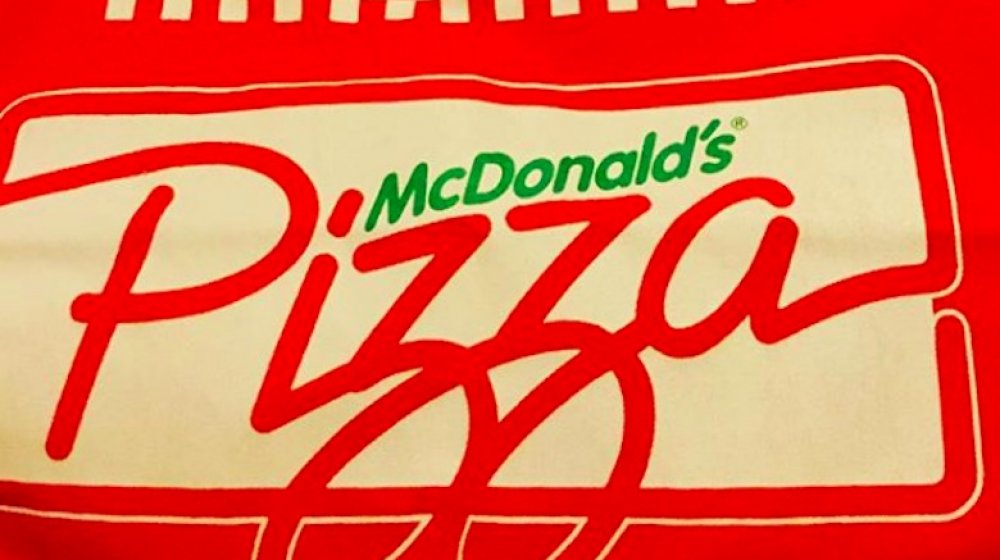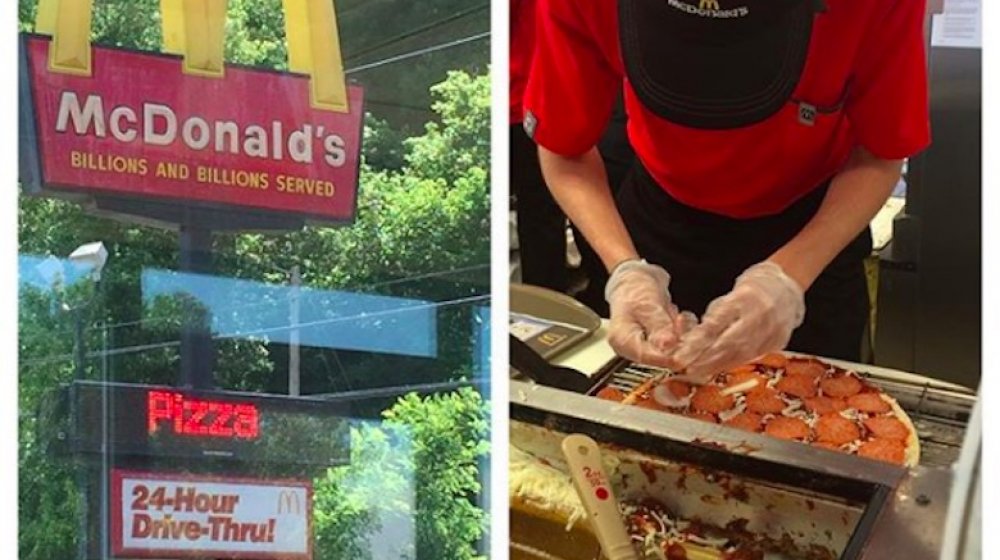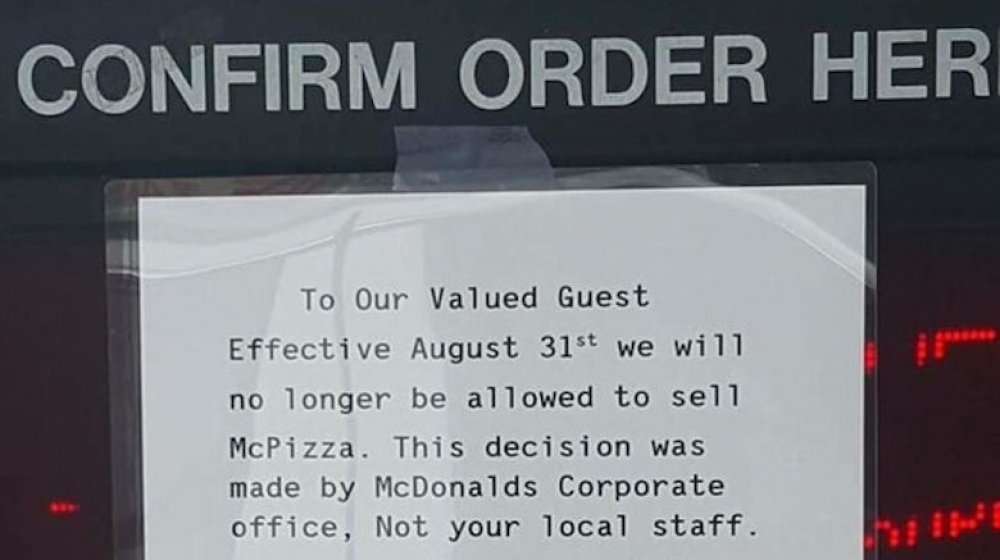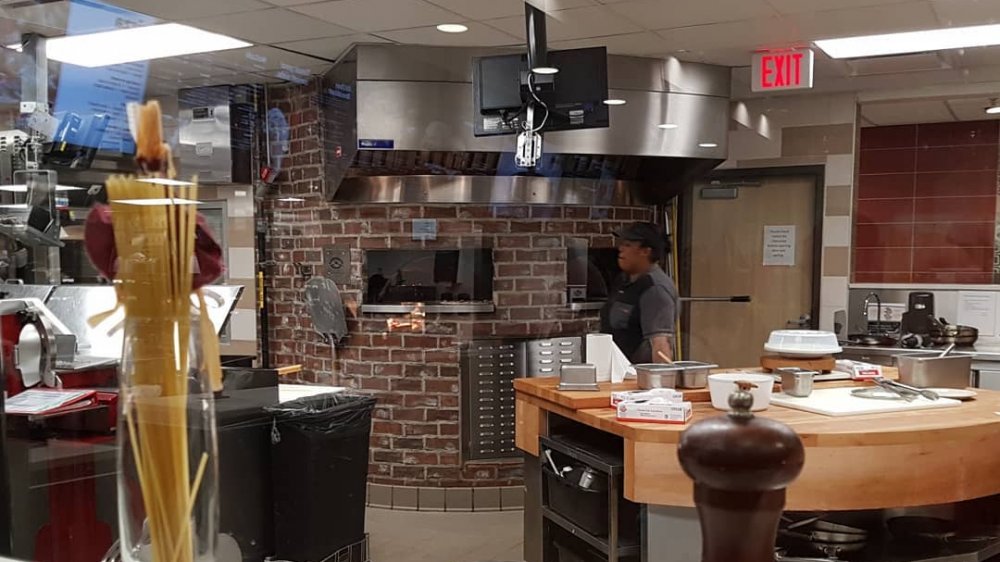The Untold Truth Of McDonald's Pizza
When it comes to a fast food burger and fries, McDonald's is probably one of the first things that comes to mind. The McDonald's Big Mac is basically an icon, beloved around the world. McDonald's french fries are consistently ranked among some of the best you can get at fast food chains.
But McDonald's has experimented with so much more than its burgers and fries over the years, and there have been a lot of fails. There were the McSalad Shakers and the Snack Wraps in the early 2000s. Before that, the company tried offering chicken fajitas, if you can believe it. And before McDonald's famous chicken McNuggets were introduced, McDonald's once tried out Onion Nuggets.
Among the long list of discontinued items at the fast food giant, perhaps the most intriguing is the McDonald's pizza. Pizza is probably one of the last things you think of when you picture the Golden Arches — or it might bring back one of your fondest memories of the place. Yet it might also be one of the company's biggest failed investments. So let's dive into the untold truth of McDonald's pizza.
The idea for McDonald's pizza came about decades ago
McDonald's first began developing pizza in the mid-1980s. After several years and multiple attempts to create the perfect fast food pie, the company started introducing their version to customers in 1989. It came in two sizes with a variety of topping options.
The first pizzas were test marketed at a handful of locations in Evansville, Indiana and Owensboro, Kentucky. There was certainly some skepticism about whether McDonald's could carve out a share of the $21 billion pizza market, which was already dominated by some big name fast food chains. Despite the doubts, McDonald's was looking to grow in several different ways at the time. And company leaders said they were confident that customers would come for pizza. Not to mention, sales were climbing at the time and McDonald's had plenty of money to invest.
McDonald's pizza, or McPizzas, as they would come to be nicknamed, certainly did find fans. Within a few years, the company had expanded testing to hundreds of McDonald's locations in multiple states. By some reports, there were up to 2,000 stores selling pizzas in the '90s. That's a lot of pizza coming from a place that specializes in hamburgers.
Pizzas were part of McDonald's strategy to bring in more customers in the evenings
Pizza was supposed to be a major part of McDonald's dinner time strategy. In the late '80s when the pizza testing started, McDonald's was seeing big growth in breakfast sales, but evening sales had been disappointing company leaders for years. McDonald's executives realized that in order to keep dominating the market, they would also have to contend with more competition than just other burger chains.
With that in mind, pizza was actually the cornerstone of a new, separate menu McDonald's was developing to try and bolster its dinner sales. The menu would only be available in the evenings, and didn't include burgers. Instead, the company hoped to offer items like chicken and pasta entrees alongside the pizza, which employees would bring right to customers at their table. McDonald's apparently went as far as trying to reconfigure a couple of restaurants to feel more like pizzerias in the evening, complete with checkered tablecloths.
Developing fast-food pizzas was a complicated and years long process for McDonald's
Getting a pizza on the menu did not come easy for McDonald's. Interviews and reports confirm the company spent a lot of money, time and effort to try and make this dinner time strategy work. That meant finding a way to make pizzas on a mass scale that could be cooked to order as quickly as possible. Those pizzas also needed to have a crispy crust and flavor that could stand up to the competition.
There were a lot of technical obstacles, to say the least. McDonald's reportedly spent years building a patented oven that could reduce the cook time down to just over five minutes. However, in order to fit these super ovens into their kitchens, the participating store locations had to be remodeled to make room for the new equipment needed. On top of that, some of the older locations needed new, bigger drive-thru windows that pizza boxes could fit through.
Before the pizza, McDonald's created its own version of a Hot Pocket
McDonald's worked on its pizza recipe for years and reformulated it several times before it released the McPizza that fans came to know and love.
One of the precursors to the McPizza was actually more like a calzone or a Hot Pocket. The handheld pizzas came in individual little sleeves, and were sold at only a small number of test locations, according to a collector who posted pictures of the limited edition packaging online. The goal was reportedly to let drive-thru customers enjoy them without cheese spilling into their lap. While we would never turn down a handheld pizza, for some reason the product never made it past regional testing.
According to one insider, McDonald's continued to tweak its recipe even after the McDonald's pizza came to be. That included making changes to the sauce and to the crust formula to make it thinner and crispier.
McDonald's pizzas effectively started a Pizza War
Once McDonald's pizza's hit the market, McDonald's also faced an immediate response from competing fast food pizza chains. The two biggest brands at the time, Pizza Hut and Domino's, each had thousands of locations across the country, and they weren't very thrilled to have someone new trying to encroach on their territory. One ad executive for Pizza Hut declared in a 1989 interview, "every place you see a McDonald's Pizza, you're going to see a war."
When McDonald's first introduced its pizzas, Pizza Hut reacted by running its own buy-one-get-one-free promotion to keep its customers' attention. That was just the start. Pizza Hut also released commercials that warned customers, "don't make a McStake. Come to Pizza Hut for a real pizza." The chain even mocked the McDonald's pizza as "McFrozen."
McDonald's fought back with its own commercials. Many of its ads focused on fast service, and how quickly McDonald's could deliver hot, fresh pizza to its customers.
Pizzas were short lived on most McDonald's menus because they took too long to cook
In the end, it's safe to say McDonald's did not end up winning the so-called pizza war. By the end of the '90s, pizza had been discontinued in most of its restaurants.
Though it was never officially stated by executives, many have speculated that the chain's need for speed was actually one of the biggest reasons the McDonald's pizza didn't have staying powder on McDonald's menus. Fast service is a top priority for McDonald's business, and even with new ovens and other equipment, the pizza-making process was still just too long.
An investigation by Mental Floss in 2015 uncovered the closest thing we have to a public explanation from McDonald's as to why pizzas were discontinued. It came in the form of a response to a customer question posted on the McDonald's Canada website back in 2012 (the page has since been removed from the site). In the comment, McDonald's confirmed that the pizza's actual preparation time was closer to 11 minutes (that's like years in fast food time), which was "way too long" and "slowed down our game." Rather than risk its reputation for fast service, McDonald's thought it was best to give up on pizza once and for all.
The pizzas were also more expensive than most other items on McDonald's menu
Another important fact worth noting is the price of McDonald's pizzas. When they first rolled out, a standard 14-inch pizza started at $5.80. The larger, deluxe pizza was more than $9. That may sound like a pretty decent price today, but it was significantly more expensive than most of the other items on McDonald's menu at the time. In 1990, you could get a hamburger at McDonald's for just 75 cents.
The higher pizza costs didn't fit the mold at a time when price wars were dominating much of the fast food industry. Alongside most other major fast food chains, McDonald's was looking for new ways to lower menu prices and offer deals to its customers. McDonald's rolled out a Value Campaign in 1991 that included 59 cent hamburgers and 69 cents cheeseburgers, among other extra value meals. A few years after that Campaign 55 was introduced, which offered breakfast sandwich combos for just 55 cents.
It's hard to see how a nearly $10 pizza can compete with those other super low menu prices.
The McPizzas didn't totally disappear until 2017
While almost all McDonald's locations stopped selling pizza before we reached the 21st century, it turns out there were some hold outs.
In 2015, a news report from Canada.com (via Eater) uncovered there were two McDonald's restaurants still selling McPizzas, sparking a renewed craze for the nostalgic McDonald's novelty. The two locations, in Pomeroy, Ohio and Spencer, West Virginia, operated under the same franchise owner, Greg Mills, who wanted to keep the McDonald's pizza tradition alive.
Pretty soon, the story went viral, and people started traveling hours to get their hands on the infamous McDonald's pizza. For some visitors, the experience was like a walk down memory lane, and for others it was a glimpse into a past item they've only heard about. One customer posted on social media that eating McDonald's pizza was "like a slice of time travel." And how's this for pizza dedication? In 2017, three guys from Canada generated a bunch of buzz online when they filmed their 500-mile journey from Ontario to West Virginia just for a taste of McDonald's pizza.
According to reports, the pizza recipe at the two locations was slightly different from the original formula. One thing that remained the same was the long cook time — while a personal pizza took about 4 minutes to cook, a larger pie still needed about 11 minutes in the oven. By all accounts, the wait was worth it. Locals and fans who got to experience the McPizza seemed to love it. Some even called it one of the best pizzas in town.
It appears the renewed attention to the last remaining McDonald's pizzas led to them disappearing for good
After the McDonald's pizzas went viral again in 2015, it wasn't long before McDonald's corporate headquarters took notice. However, rather than prompting a larger comeback, the renewed hype around the last McDonald's pizza locations may have actually led to the ultimate demise of the McDonald's pizza.
The order came down in the summer of 2017. Franchise owner Mills posted signs at his restaurants notifying customers that the stores would "no longer be allowed to sell McPizza" after August 31, 2017. Mills emphasized that "this decision was made by McDonald's Corporate office" and not the local staff. Regardless, customers were definitely not lovin' it. Local news reports at the time lamented the end of an era. To this day, there are still online petitions circulating in an effort to bring back McDonald's pizza. However, it seems pretty clear the company intends to leave their famous pizza in the past.
You can still get pizza at one McDonald's location today... but it's not the same as the original
The only place you can get pizza at McDonald's today is at the company's location in Orlando on International Drive, known as Epic McD. The store, which opened in 2016, is actually dubbed the world's largest entertainment McDonald's & PlayPlace.
This impressive McDonald's location features an exclusive, open design kitchen with a wood-fired oven right in the center. Pizza isn't the only highlight on the expanded menu. Customers can also choose from a range of pasta, paninis, and specialty breakfast items like custom omelets and Belgian waffles. The restaurant, which is three stories tall, also features an arcade, a dessert bar and frequent special events. However, if you're planning to visit, be warned. According to reviews on TripAdvisor, customers at Epic McD may have to deal with long wait times for food. Of course, it makes sense that if they serve better than average McDonald's food, you're probably going to have a longer than average wait.
As for the pizza itself, the reviews are mixed. One customer commented that "the pizza was something close to a DiGiorno frozen pizza." If that's worth the journey to you, then we say go for it. Otherwise, it may be best to just let the McPizza live on in our memory of late, great, fast food fails.
